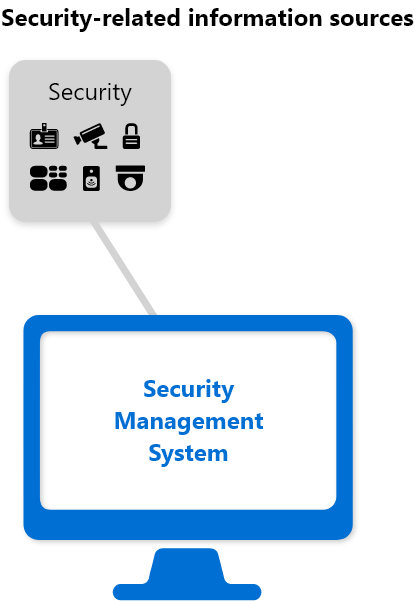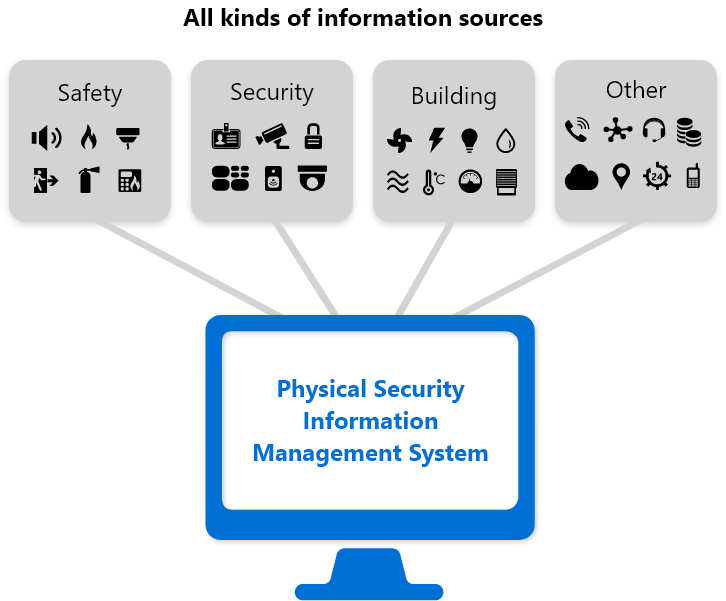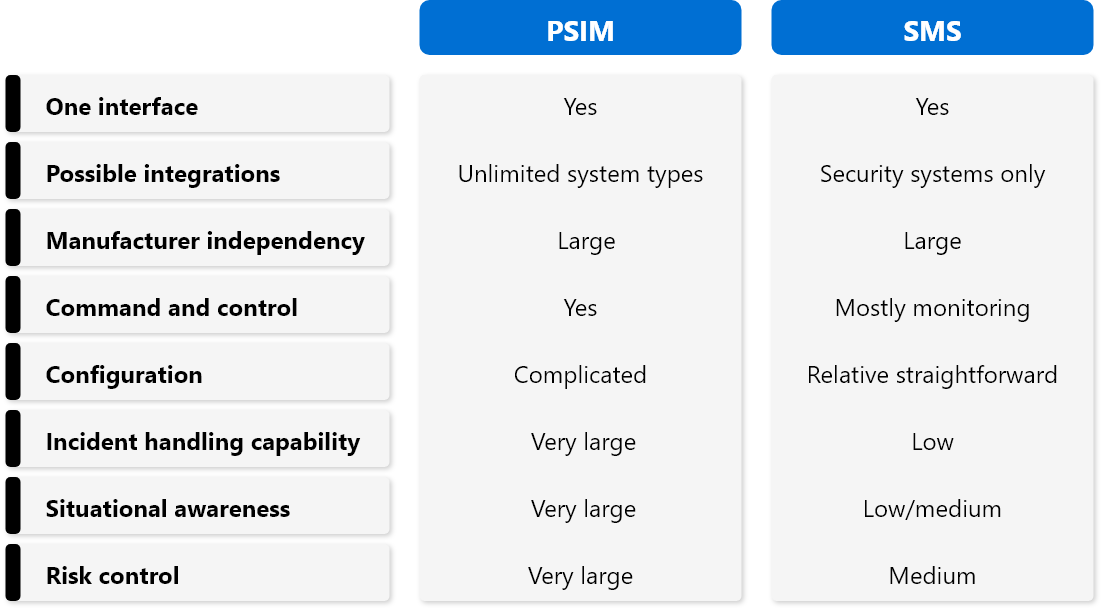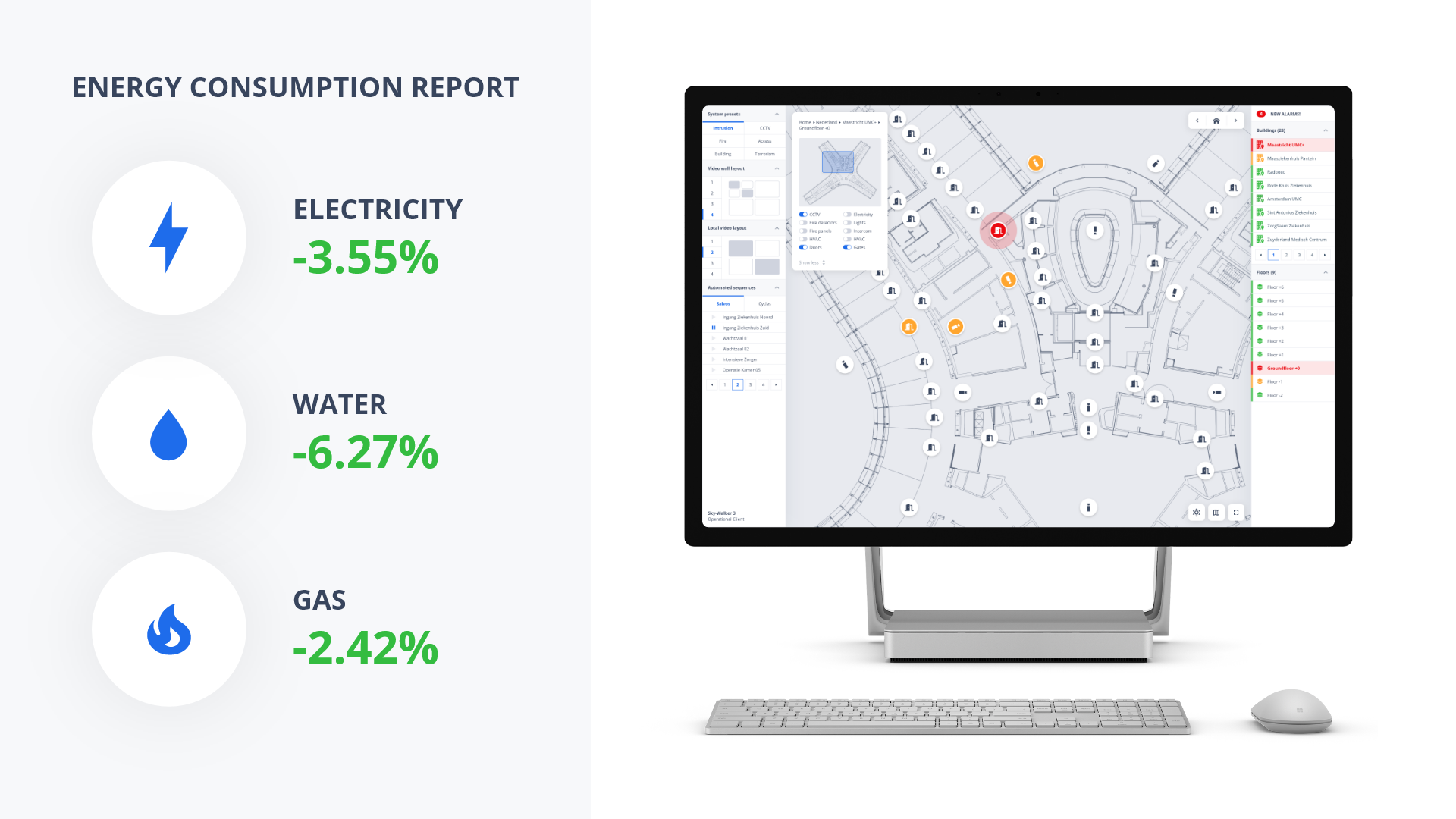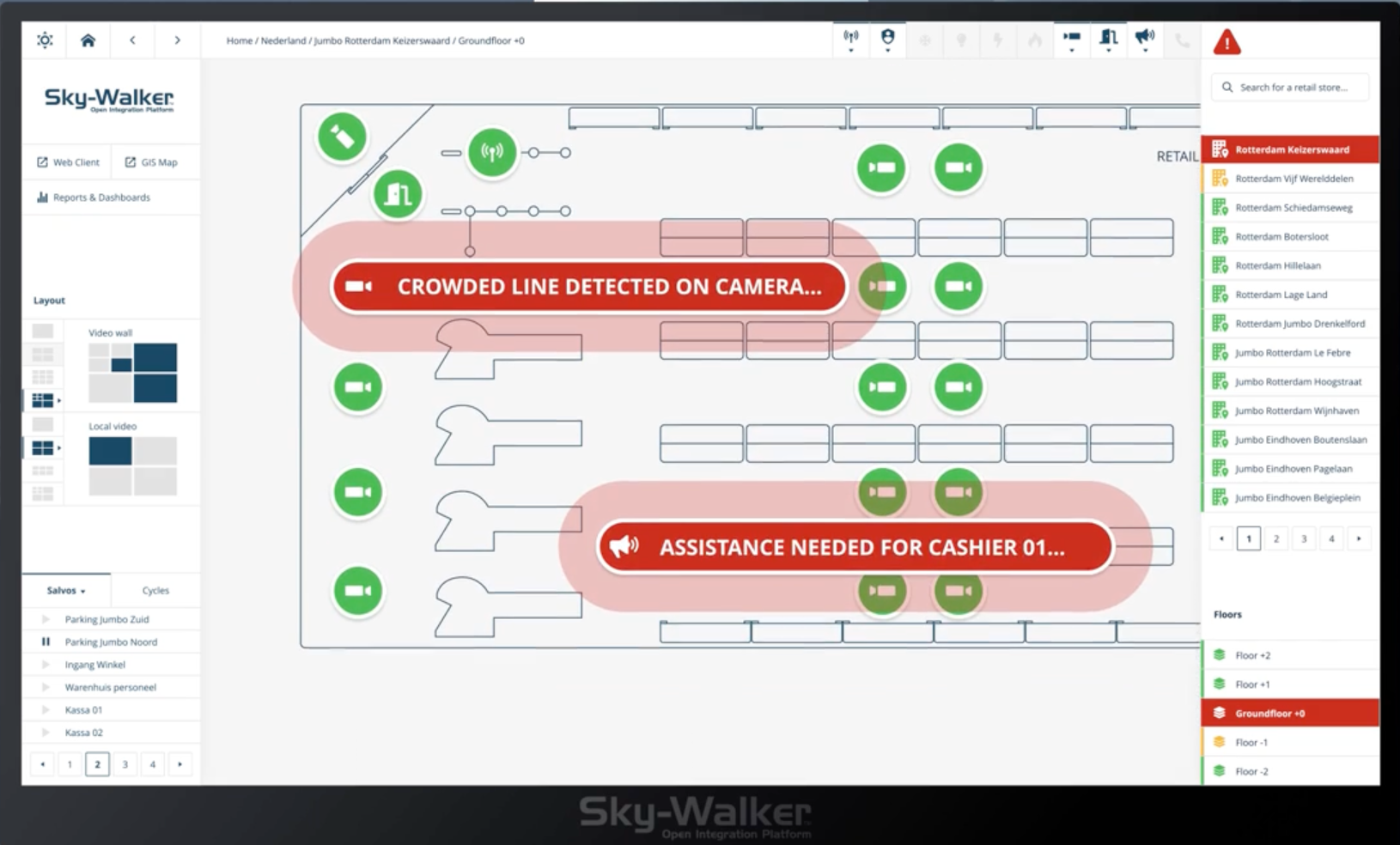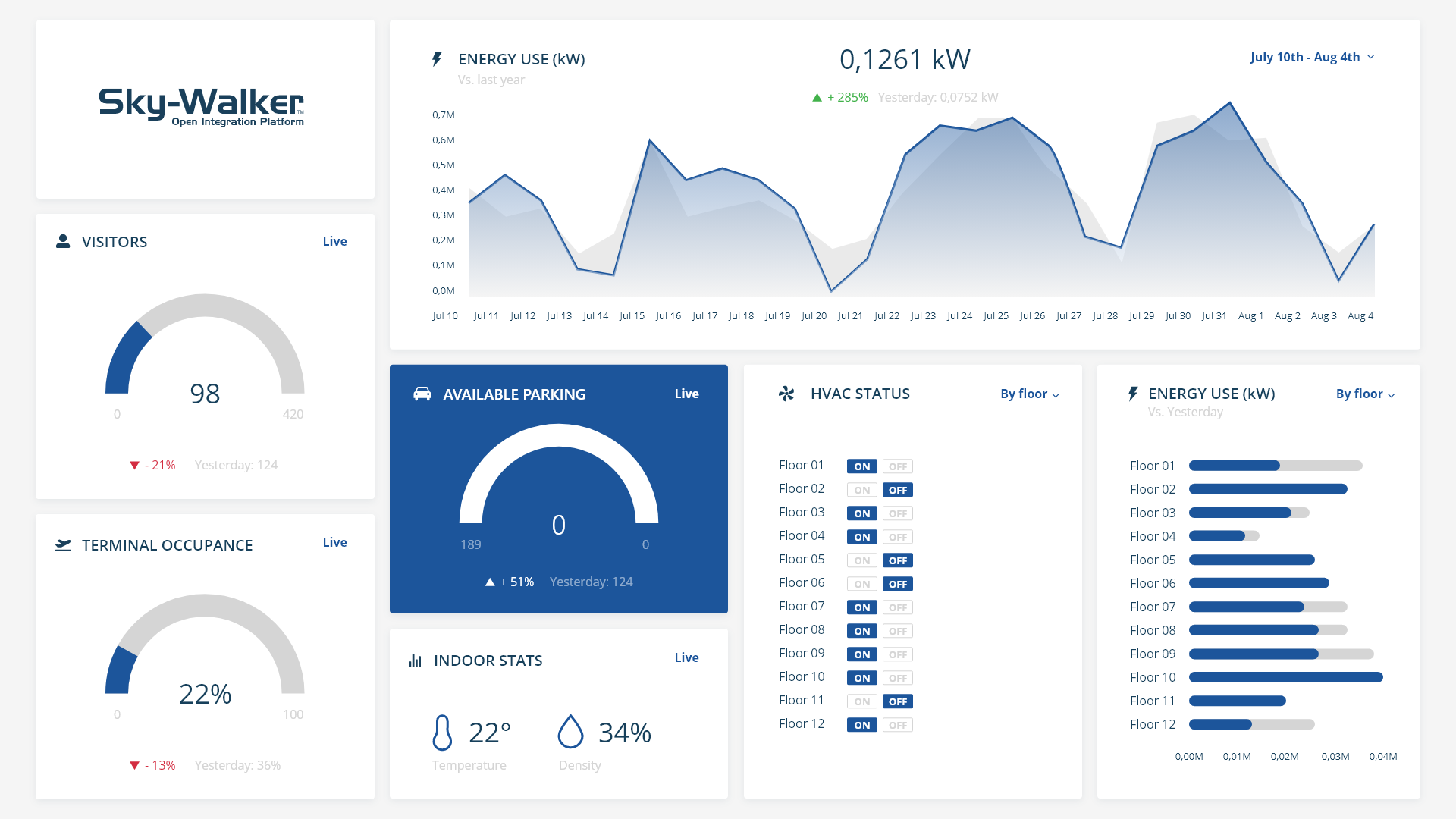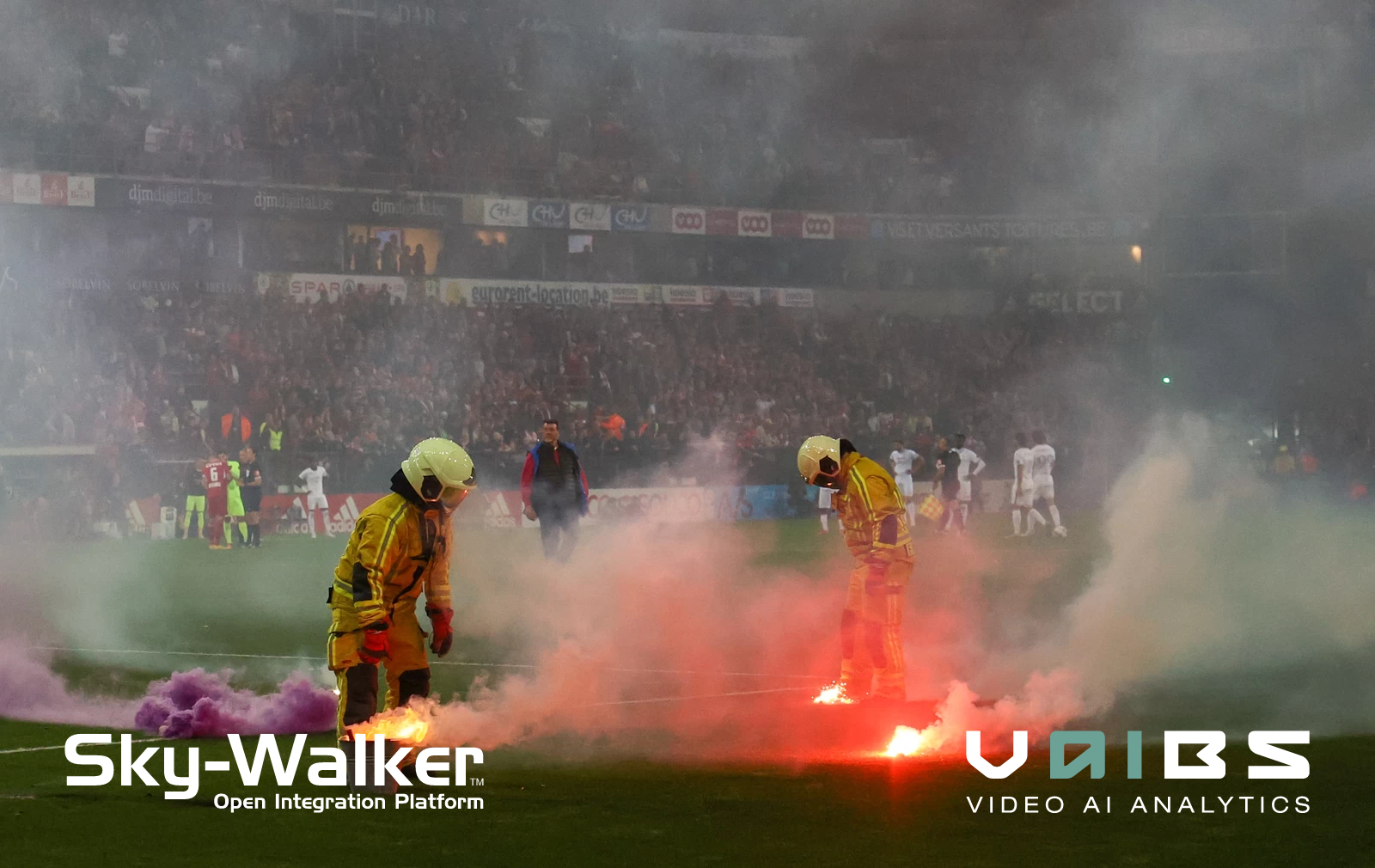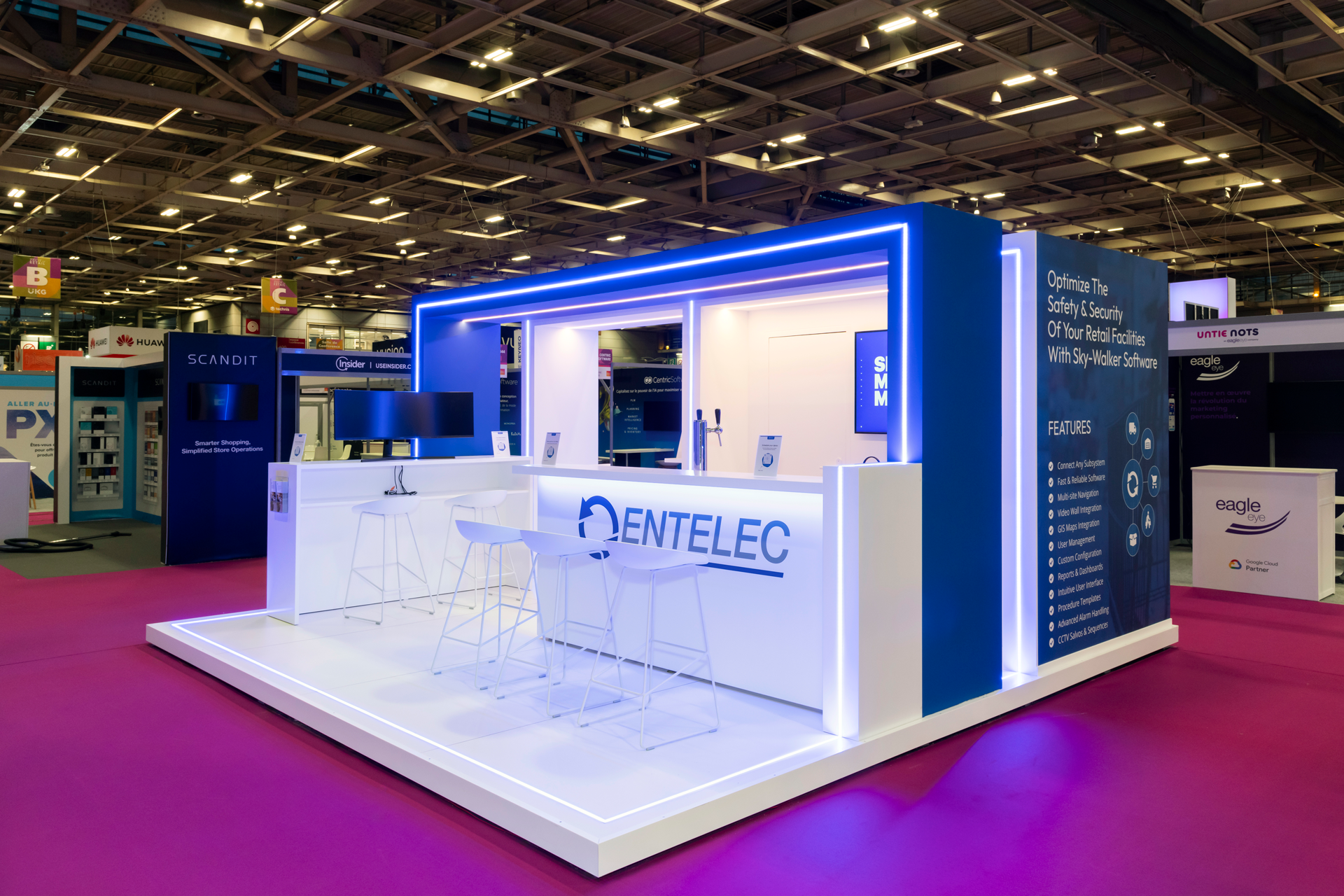How an SMS platform differs from a PSIM platform
As a professional in security management, you often come across many kinds of systems capable of managing multiple security installations centrally. In recent years, with new technologies arising each year, the amount of different management systems has also increased. Today we take a closer look at the differences between the much-known Security Management System or SMS, and the often lesser-known Physical Security Information System or PSIM.
Our goal is to explain both the similarities and differences between the two types of management systems, to give you more insight on how and when to implement which type of system.
Physical security of buildings and multi-sites will always be important as it is the primal way of defending an organisation against theft, violence, vandalism and so on. There are many types of systems that enable an organization to take measures in order to control their security risks.
Some of the most used security systems are for example:
- CCTV (Closed Circuit Television)
- Access control (badge readers, entrance codes…)
- Intrusion detectors (door contacts, window contacts, broken window sensors…)
- Intercom / IP Phones
- Automated barriers
- Perimeter detection
- …
As you can see, there are a lot of systems available to secure physical assets and buildings. Efficiently managing them can often become quite the complicated task, especially in larger buildings and multi-site or multi-location organisations. Therefore, a software platform capable of integrating these different security systems in a central management system is often needed in order to efficiently manage security.
To prevent confusion, we first dive a little into the terminology of certain terms we will be using.
- System: a physical system like a camera, a door controller, an HVAC unit and so on.
- Management system: a non-physical system capable of integrating different kinds of physical systems. In practice, a management system is a software platform.
- Software platform: a package of multiple software pieces that together make up an entire solution.
We will now explore two of the most prominent management systems capable of integrating security systems centrally, being the SMS platform, and the PSIM platform.
An SMS is capable of integrating all these different kinds of security systems centrally in one monitoring platform. This way, security operators have all the information about their security systems close by, from a central location. Instead of multiple systems operating next to each other, they are now integrated in one central solution. This way, the daily operation of security systems becomes a clear and consistent task for security operators. They now only need to learn how to operate the SMS instead of the multiple, different software applications you often find in a security control room.
In short, the SMS enables the organisation to centrally manage their security systems, increase the level of security and situational awareness, while providing a better way of evaluating security risks. Also, an often-overseen advantage is the fact that security operators only need to know how to use one software application, thus reducing training costs. The integration of data from multiple sources makes systems smarter and therefore more effective. With SMS you can acquire a higher degree of protection.
The SMS however, has its limitations. And that is why the PSIM platform was introduced.
A PSIM software platform is a platform that integrates all security-related systems of a building or multi-site area into one, intuitive interface. Which is also the case with the SMS.
But, where the SMS is mostly capable of only integrating security systems and alarms, the PSIM platform can go much, much further. In the PSIM platform, many types of other systems in the realm of building systems, safety systems, third-party applications and so can be integrated to the platform as well. Via extensive analysis and reporting capabilities, operators are able to make fast decisions, while being guided by pre-defined workflows and processes. The ultimate goal of a PSIM software platform is to reduce costs as a result of improved efficiency and security, often based on extensive procedures and workflows being built into the software platform.
For more information on the benefits of a PSIM platform, click here.
If you are not really familiar with the terms SMS and PSIM, or are only familiar with one of the two, choosing the right management system for your specific case can become quite difficult. They both have the core task of integrating systems in a central management and/or monitoring platform with a single interface. But on a deeper level, they are very different from each other. That is why we will now go over some of the similarities and differences between the SMS and the PSIM platform.
1. One interface
One of the biggest similarities between both management systems is the fact that they are able to integrate and centralize multiple systems into one interface (Graphical User Interface or GUI).
Often, there are extensions of the interface available on different types of screen devices like laptops, tablets and mobile phones.
2. Possible integrations
As we just stated, both platforms have the same core functionality of integrating mostly physical systems in a central management platform (sometimes non-physical applications can be integrated as well).
The SMS however is only capable of integrating security systems, whereas the PSIM has almost no limitations regarding the systems and applications that can be integrated. A PSIM platform typically also integrates safety and building related systems, as well as other software applications, into one platform.
3. Manufacturer independency
If you are choosing for a good SMS or PSIM, you should be able to be free to pick whichever system brand you would like to integrate, due to their open integration nature. If you cannot, you are being vendor-locked-in and you might need to look for another SMS or PSIM supplier. This is not helpful to your organisation as you would have difficulty in choosing the optimal systems and will have trouble implementing new technologies into your organizational structure somewhere in the future.
4. Command and control
The SMS platform is very useful for an organization to have a better and more efficient way of monitoring their security. Many SMS platforms however do not give the option to their users to have much control over the systems from within the application.
Being able to command and control many types of systems with a single click of a mouse button (or finger tap on a tablet or smartphone), is one of the strongholds of a PSIM platform. Using both proprietary and non-proprietary protocols, commands and controls can be carried out to the physical systems from within the software platform.
5. Flexibility of configuration
Although not the case for our solution, most SMS platforms do not give the user much freedom in the configuration of the platform. A typical PSIM platform gives the user much more freedom in configuration.
6. Incident handling
One of the biggest differences between the SMS and the PSIM platform is their incident handling capability. The SMS platform is basically just a centralization of multiple security systems, in order for them to be used and monitored from a central software application. This is very useful to bring more structure in the security management of the organisation.
The PSIM platform, however, goes a step further than just centralizing security systems. Like we said before, many other types of safety, building and other types of systems are integrated as well. With all these systems in place, uniformly approved procedures and workflows can now be built into the PSIM platform. This enables the platform operators to go through each and every step of security, safety, and technical incidents in the same software application.
The true power of the PSIM platform is the fact that within each workflow all these systems can be used in order to handle the incidents efficiently and effectively. With smart interactions between systems, operators also have an easier time of finding for example the correct CCTV camera when a fire alarm has gone off somewhere.
7. Situational awareness
A PSIM platform is able to provide the user much more situational awareness than an SMS platform. This is the result of more types of systems being integrated into a PSIM platform, together with more incident handling capabilities, smart interactions between systems and dashboarding and reporting options.
8. Risk control
In their core, both management systems enable to control the organisation’s risks better. However, the SMS platform is only limited to control security-related risks, compared to the PSIM platform that is able to control almost any type of security, building, safety and technical related risks. The PSIM platform also enables the integration of pre-defined procedures and workflows into the day-to-day operations of the platform operator, thus providing a much wider range of risk control.
Smaller organizations with less complexity and device diversity could benefit more from an SMS platform. The investment is smaller, and you still get a decent security option. By integrating these systems with an SMS, the systems can be operated centrally. Synergy is created because the linked systems offer more intelligence and therefore a higher level of security than the sum of the separate systems. The cost in an SMS is limited and the return on investment is high. But if you have a big organization with a lot of complex systems than a PSIM system is the better option for you.
PSIM is better when your firm has a high chance of security incidents occurring. These security incidents could lead to calamities, which the PSIM platform could prevent. A PSIM combines security protocols with safety and other types of protocols and thereby serves as the cornerstone of an organization's safety and security process. Operators and all other internal and external players in crisis situations are optimally provided with a PSIM. All the necessary data is obtained instantly, to manage the situation together as rapidly and efficiently as possible.
We are a provider of both SMS and PSIM software. But the way we do this is quite unique. We offer an open integration platform called Sky-Walker. Sky-Walker is completely modular, which means that we are able to think out solutions tailored for our customers. It is the customer who needs to decide exactly how far they want to take the solution.
The biggest advantage of our way of working is the fact that you do not need to choose between features. If you need the functionality of an SMS platform, with some basic incident workflows built in while also using some non-security related systems as well, Sky-Walker is the way to go. Not a problem at all, we will provide you the solution just the way you want it to be.
Another big advantage of our modular approach is the ability to extend your platform functionalities and features over time. If you want to start of by only integrating a certain system at first, with the option of integrating other systems later on, that is again, completely up to you.
If you want to learn more about Sky-Walker and our way of working, you can write down some questions you might have
here, or ask for a live demonstration of our platform
here.







 Download Product Ebook
Download Product Ebook View all our solutions
View all our solutions Sky-Walker Architecture
Sky-Walker Architecture View all our integrations
View all our integrations Book Protocol workshop
Book Protocol workshop Our Company
Our Company Contact Us
Contact Us View All Our Case Studies
View All Our Case Studies English
English Français
Français Nederlands
Nederlands